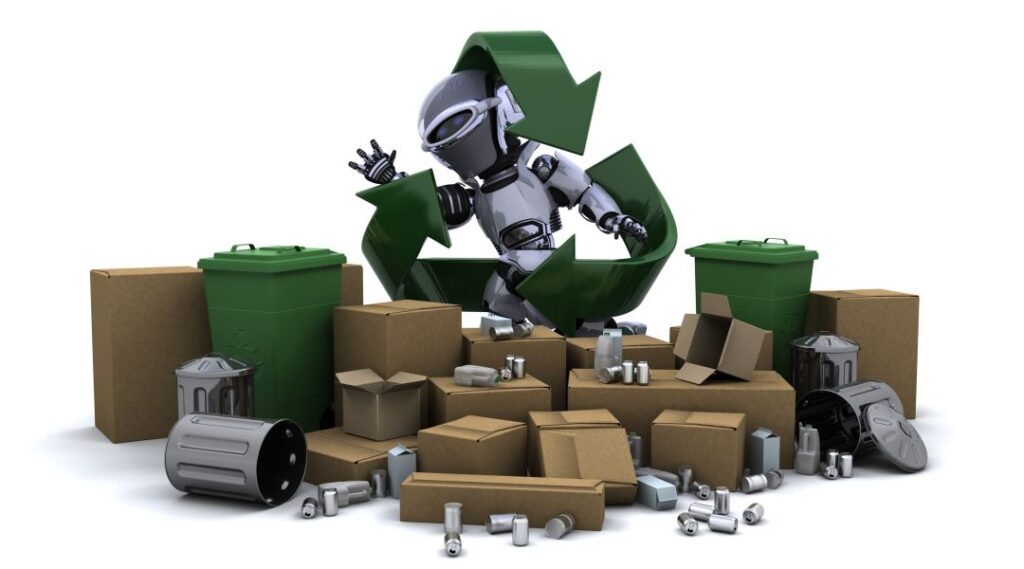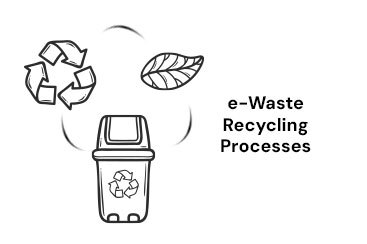Table of Contents
The Challenge of E-waste Management in India
India is one of the largest producers of e-waste globally, and e-waste management in India is a concern and challenge. The recycling processes for e-waste typically involve several stages to ensure the safe and environmentally responsible disposal of electronic devices.
Stages of E-waste Recycling
Collection
E-waste collection is the initial step in the recycling process. It involves the collection of discarded electronic devices from various sources, such as consumers, businesses, and institutions. Collection methods can include drop-off points, curbside pickups, and organized collection drives.
Sorting and Categorization
Once the e-waste is collected, it undergoes sorting and categorization. This step involves separating different types of electronic devices based on their composition, size, and recyclability. The goal is to group similar devices for efficient recycling and resource recovery. Still, functional devices can be refurbished/re-purposed or resold to consumers.
Dismantling
The electronic devices are disassembled into their constituent parts in the dismantling stage. Skilled workers or automated machines carefully remove the external casings and separate components such as circuit boards, cables, plastics, metals, and batteries. This process requires proper tools and techniques to avoid damaging the components and to ensure worker safety. Components that are still functional can be refurbished or reused in other devices.
Hazardous Substance Removal
Many electronic devices contain hazardous substances, including lead, mercury, cadmium, and flame retardants. These substances must be safely removed to prevent environmental pollution and health risks. Specialized processes extract and separate hazardous materials from the dismantled components.
Material Recovery
After the hazardous substances are removed, the materials recovered from e-waste are processed for recycling. Metals like copper, gold, silver, nickel, cobalt, and aluminium are extracted from circuit boards and other components. Plastics and glass are sorted, cleaned, and processed for reuse or transformation into new products.
Responsible Disposal
Some components and materials that cannot be effectively recycled or recovered undergo proper disposal. These materials may include non-recyclable plastics, mixed residues, or hazardous substances that cannot be completely separated. They are disposed of in authorized and environmentally sound facilities to prevent contamination and pollution.
Recycling and Reuse
The recovered materials are sent to specialized recycling facilities for further processing. Metals are smelted, refined, and used as raw materials for manufacturing new electronic products or other industries. Plastics and glass are often recycled into new products, such as plastic pellets or fiberglass.

Importance of Proper Regulations
It is important to note that the e-waste recycling process can vary depending on factors such as the scale of operations, available technology, and regulatory requirements in different regions. Additionally, the involvement of the informal sector in some countries, such as India, can lead to less regulated or unsafe recycling practices, emphasizing the need for proper regulations and enforcement to ensure responsible e-waste recycling globally.
Renovar AI’s Technological Solution
At Renovar AI, we introduce AI-based tech solutions into our robust reverse logistics of the e-waste and our advanced recycling processes of e-waste, thus preventing improper collection and unscientific recycling of e-waste by the rag pickers. You can contact us here to learn more about how our technology-based solution works.
FAQ
What is e-waste recycling?
E-waste recycling is safely and responsibly disposing of electronic waste through collection, sorting, dismantling, hazardous substance removal, material recovery, and recycling.
Why is e-waste management a concern in India?
India is one of the largest global producers of e-waste, making effective management crucial to prevent environmental pollution and health risks.
How are hazardous substances removed during e-waste recycling?
Specialized processes extract hazardous substances like lead, mercury, cadmium, and flame retardants from dismantled electronic components.
What role does Renovar AI play in e-waste recycling?
Renovar AI introduces AI-based tech solutions to ensure the proper handling of e-waste, preventing improper collection and unscientific recycling practices.
Why are proper regulations essential for e-waste recycling globally?
Proper regulations are crucial to standardize and enforce responsible e-waste recycling practices globally, preventing environmental contamination and health hazards.


